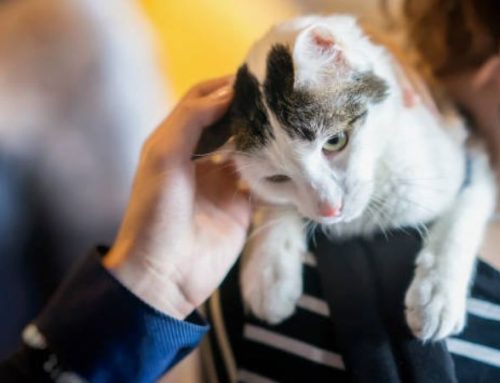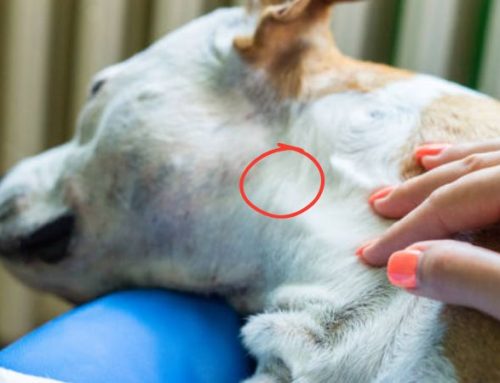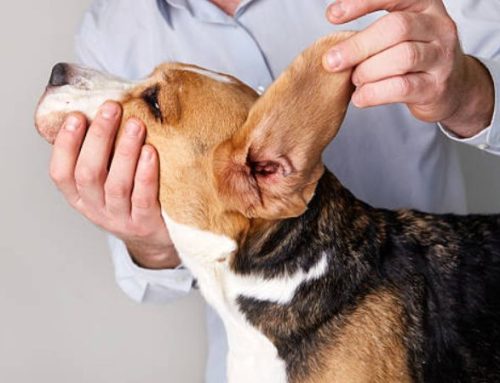Welcoming a tiny, purring bundle of fur into your home comes with a whirlwind of excitement—and a fair share of questions. One of the most important is: when should your kitten start nibbling on solid food and sipping water? In this guide, Nexus-Pets will walk you through everything you need to know to ensure your little feline grows healthy, happy, and strong.
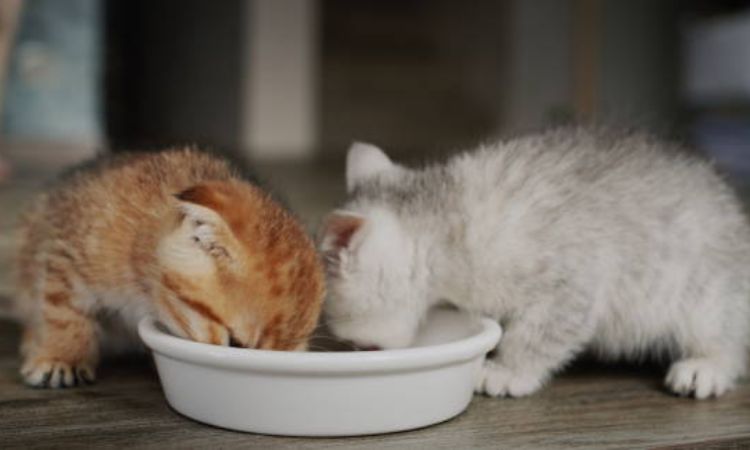
When Do Kittens Start Eating Solid Food?
Kittens usually begin the transition from milk to solid food at around four weeks of age, though some may show interest as early as three weeks. This marks the start of the weaning process, a crucial stage where kittens gradually become more independent and begin to explore new textures and flavors.
At the beginning of weaning, it is recommended to introduce wet kitten food mixed with kitten formula or warm water. This creates a soft, easy-to-eat mixture that encourages kittens to start nibbling while still providing the essential nutrients they need from milk. Over time, the proportion of solid food is gradually increased, while the amount of formula or milk is decreased. This slow transition helps prevent digestive upset and ensures the kittens receive adequate nutrition during this critical growth period.
The pace of weaning can vary depending on each kitten’s development. Factors such as whether the kitten is orphaned or being raised with its mother can influence readiness for solid food. Kittens raised with their mother may start exploring solids at their own pace under her guidance, while orphaned kittens rely entirely on careful monitoring and assistance from the caregiver to ensure a smooth transition.
By around eight weeks of age, most kittens are fully weaned and able to eat wet or dry kitten food independently, though individual timing can differ slightly. Providing fresh, clean water and access to appropriate food throughout this period supports healthy growth and development.
When Do Kittens Start Drinking Water?
Kittens typically begin drinking water around 4 weeks of age, which coincides with the start of the weaning process and the introduction of solid food. Before this stage, kittens rely entirely on their mother’s milk or a specially formulated kitten milk replacer, which provides all the hydration they need.
As they start eating wet or moistened dry food, offering fresh, clean water in shallow dishes becomes essential. Shallow bowls ensure the water is easily accessible and safe, preventing accidental spills or choking. Placing water away from food bowls can encourage drinking, as cats naturally prefer to keep eating and drinking areas separate.
The transition from milk to water is gradual. During this period, kittens slowly reduce their dependence on nursing while increasing their intake of solid food and water. Ensuring water is always available and monitoring your kitten’s drinking habits helps support healthy kidney function, digestion, and overall growth.
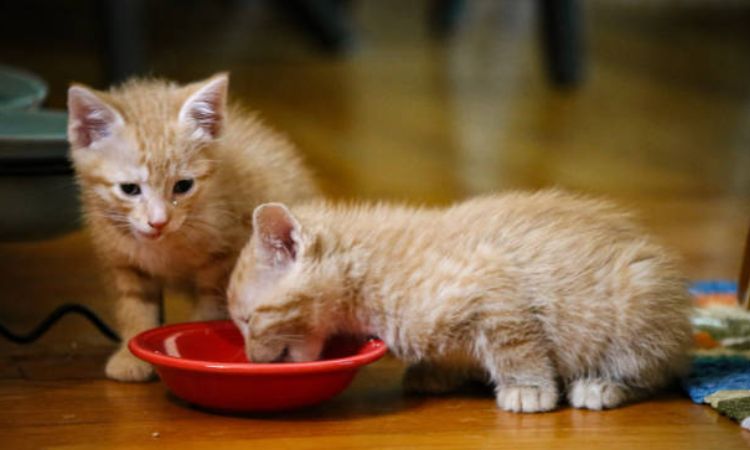
Weaning Timeline and Tips
The weaning process for kittens typically spans 4 to 6 weeks, beginning around 4 weeks of age and usually completing by 8 to 10 weeks. During this period, kittens gradually transition from nursing or bottle feeding to eating solid food independently.
Signs That Kittens Are Ready to Wean
Kittens show clear indicators when they are ready to begin weaning:
- Chewing on food: Kittens start exploring solid food with their mouths and may nibble on wet or softened dry food.
- Reduced interest in nursing: They begin spending less time feeding from their mother or bottle and more time exploring food options.
- Increased mobility and curiosity: Kittens actively move around, play, and show interest in their surroundings, signaling growing independence.
How to Support Kittens During Weaning
To ensure a smooth and healthy weaning process:
- Provide constant access to food and water: Offer fresh, high-quality wet or dry kitten food, and small, shallow dishes of clean water at all times.
- Monitor growth and health: Track daily weight and eating habits to ensure kittens are gaining properly. Watch for signs of digestive upset, lethargy, or loss of appetite.
- Gradually transition foods: Start with wet kitten food mixed with formula or water, then slowly introduce dry kibble, reducing liquid over time.
- Maintain a clean environment: Replace food regularly and clean dishes to prevent contamination, as kittens are prone to messy eating during weaning.
- Encourage independence: Allow brief separations from the mother to promote self-feeding skills, but avoid removing kittens too early to prevent behavioral or social issues.
By following these guidelines, you can help your kittens transition safely from milk to solid food, ensuring proper nutrition, healthy growth, and the development of independence.
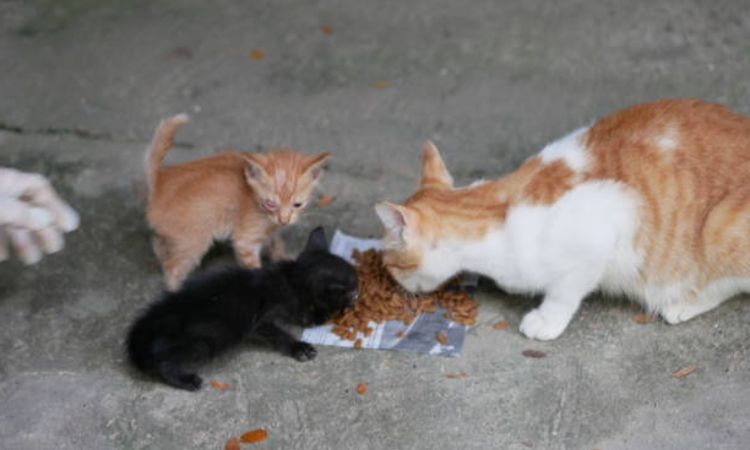
Nutritional Needs and Feeding Frequency
Providing proper nutrition is crucial for kittens during the weaning period to support healthy growth, development, and overall well-being.
High-Quality Kitten Food
Kittens require a balanced diet specifically formulated for their age and growth needs. This includes:
- Complete and balanced kitten food: Look for products approved by the Association of American Feed Control Officials (AAFCO), ensuring they meet all nutritional requirements for growing kittens.
- Wet and dry options: Wet food is soft, highly palatable, and provides extra hydration, while dry kibble can support dental health and portion control.
- Avoid cow’s milk: Kittens cannot properly digest lactose in cow’s milk. Use only kitten formula or specialized lactose-free milk when necessary.
Feeding Frequency During Weaning
Kittens have small stomachs and high energy needs, so frequent, small meals are recommended:
- Around 4 weeks old: Begin with 4 small meals per day of moistened wet or dry kitten food mixed with formula.
- 5–6 weeks old: Gradually reduce formula and increase solid food portions while maintaining 3–4 meals per day.
- 8 weeks and older: Kittens should be fully transitioned to solid food, continuing with 3–4 meals daily.
Monitoring Intake for Healthy Growth
- Track daily food and water consumption: Ensure kittens are eating consistently at every meal and drinking adequate water.
- Weigh kittens regularly: Steady weight gain is a key indicator of proper nutrition.
- Observe for health issues: Watch for vomiting, diarrhea, lethargy, or loss of appetite, which may indicate dietary problems or illness. Consult a veterinarian promptly if these occur.
By feeding high-quality kitten-formulated food at the proper frequency and closely monitoring their intake, you can help ensure your kittens grow strong, healthy, and independent during this critical stage of development.
It’s important to remember that every kitten is an individual, and the weaning process can vary. Always consult your veterinarian if you have concerns about your kitten’s eating habits or development. Providing a proper diet during these early stages sets the foundation for a long, healthy life.




